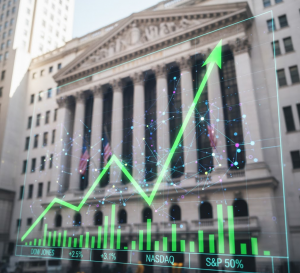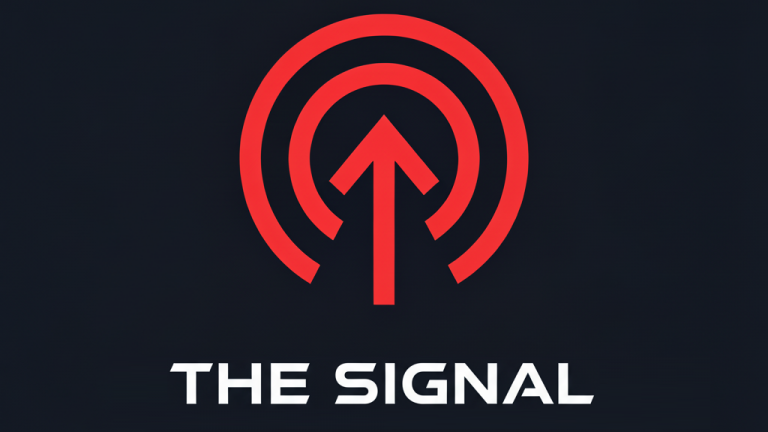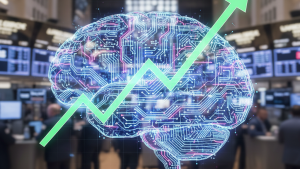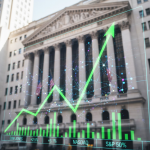For investors, the key takeaway from the Federal Reserve’s announcement today is that the central bank has officially shifted its focus toward managing emerging economic risks, even with inflation still running warm. The Fed’s first interest rate cut of 2025 signals a proactive move to support a cooling labor market, but Fed Chair Jerome Powell’s cautious tone highlights a complex and challenging environment where slowing growth and rising prices are creating a delicate balancing act.
This development is significant because it directly impacts borrowing costs for companies and consumers, potentially boosting certain sectors of the economy. However, the mixed immediate reaction from the stock market suggests that investors are weighing the positive of lower rates against the underlying economic weakness that prompted the Fed’s action. The coming days will be crucial in gauging whether this “risk management” cut is enough to soothe market anxieties or if concerns about a stagflation-like scenario—where both unemployment and inflation rise will take hold.
The Core News (What Happened?)
On Wednesday, September 17, 2025, the Federal Reserve’s Federal Open Market Committee (FOMC) announced it was lowering its benchmark federal funds rate by a quarter of a percentage point (25 basis points) to a new target range of 4.00% to 4.25%. This marks the first interest rate reduction of the year. In his subsequent press conference, Fed Chair Jerome Powell explained the decision as a “risk management” move, emphasizing that “downside risks to employment have risen” amid slowing job gains and a moderating economy. He acknowledged that inflation remains “somewhat elevated,” partly due to the effects of tariffs, creating what he described as a “challenging situation” and an “unusual” economic dynamic for the central bank to navigate.
Background (Setting the Stage)
Coming into the week, investors and analysts widely anticipated a 25-basis point rate cut, with market pricing from the CME FedWatch tool indicating over a 90% probability of such a move. The focus, therefore, was less on the cut itself and more on Chair Powell’s commentary and the Fed’s future projections. Expectations were shaped by recent economic data showing a “curious balance” in the labor market, a term Powell had used previously, indicating a simultaneous slowdown in both the supply of and demand for workers.
The actual announcement met the baseline expectation for a cut but was coupled with cautious commentary and projections that now signal the possibility of two more rate reductions before the end of 2025, a slightly more dovish stance than some had anticipated.
The Debate (The Bull vs. Bear Case)

The Bull Case (The Optimistic View): On one hand, optimists believe this rate cut is a prudent, forward-looking step to sustain the economic expansion. This view holds that by acting now, the Fed can preempt a more significant downturn in the labor market and bolster business and consumer confidence. Analysts point to the fact that lower interest rates reduce borrowing costs, which can stimulate spending and investment.
This is particularly beneficial for growth-oriented technology companies, whose future earnings are more valuable in a lower-rate environment, and for interest-rate-sensitive sectors like housing. The projection of further cuts this year suggests the Fed is prepared to provide ongoing support, which could fuel further gains in riskier assets like stocks and weaken the U.S. dollar, in turn boosting emerging markets.

The Bear Case (The Cautious View): On the other hand, cautious voices point to the Fed’s difficult position, caught between a slowing job market and persistent inflation. A report from The Guardian highlights the risk of “stagflation,” a scenario the Fed’s tools are ill-equipped to handle, as Powell noted, “Our tools can’t do two things at once.”
The mixed initial market reaction, with the S&P 500 and Nasdaq slipping after the news, indicates the rate cut may have been fully priced in, or worse, that investors are now focusing on the very economic weakness that forced the Fed’s hand. Skeptics also note the internal division within the FOMC with newly appointed Governor Stephen Miran voting for a larger 50-basis point cut, as a sign of uncertainty about the correct policy path forward. The persistent threat that tariff-related price hikes could lead to more entrenched inflation remains a major risk that could limit the Fed’s ability to cut rates further.
By the Numbers (Key Data & Metrics)
- New Federal Funds Rate Target: 4.00% – 4.25% (This is the interest rate at which banks lend to each other overnight, and it influences borrowing costs across the entire economy.)
- Rate Cut Size: 0.25 percentage points (or 25 basis points).
- Unemployment Rate: Edged up to 4.3% in August, noted as a concern by the Fed.
- Core PCE Inflation: 2.9% for the 12 months ending in August (This is the Fed’s preferred measure of inflation, and it remains above the central bank’s 2% target.)
- FOMC Vote: The decision was not unanimous, with one member, Stephen I. Miran, dissenting in favor of a larger 50-basis point cut.
- Median Rate Projection: The typical FOMC member now expects the federal funds rate to fall further this year and end 2026 at 3.4%.
Disclaimer
Disclaimer: This article is for informational purposes only and does not constitute financial, investment, or legal advice. The information provided is a synthesis of publicly available data and expert analysis and should not be considered a recommendation to buy or sell any security. Investing in the stock market involves risk, including the possible loss of principal.25 Past performance is not indicative of future results.26 Readers should consult with a qualified financial advisor to determine an investment strategy that is suitable for their own personal financial situation and risk tolerance.



















